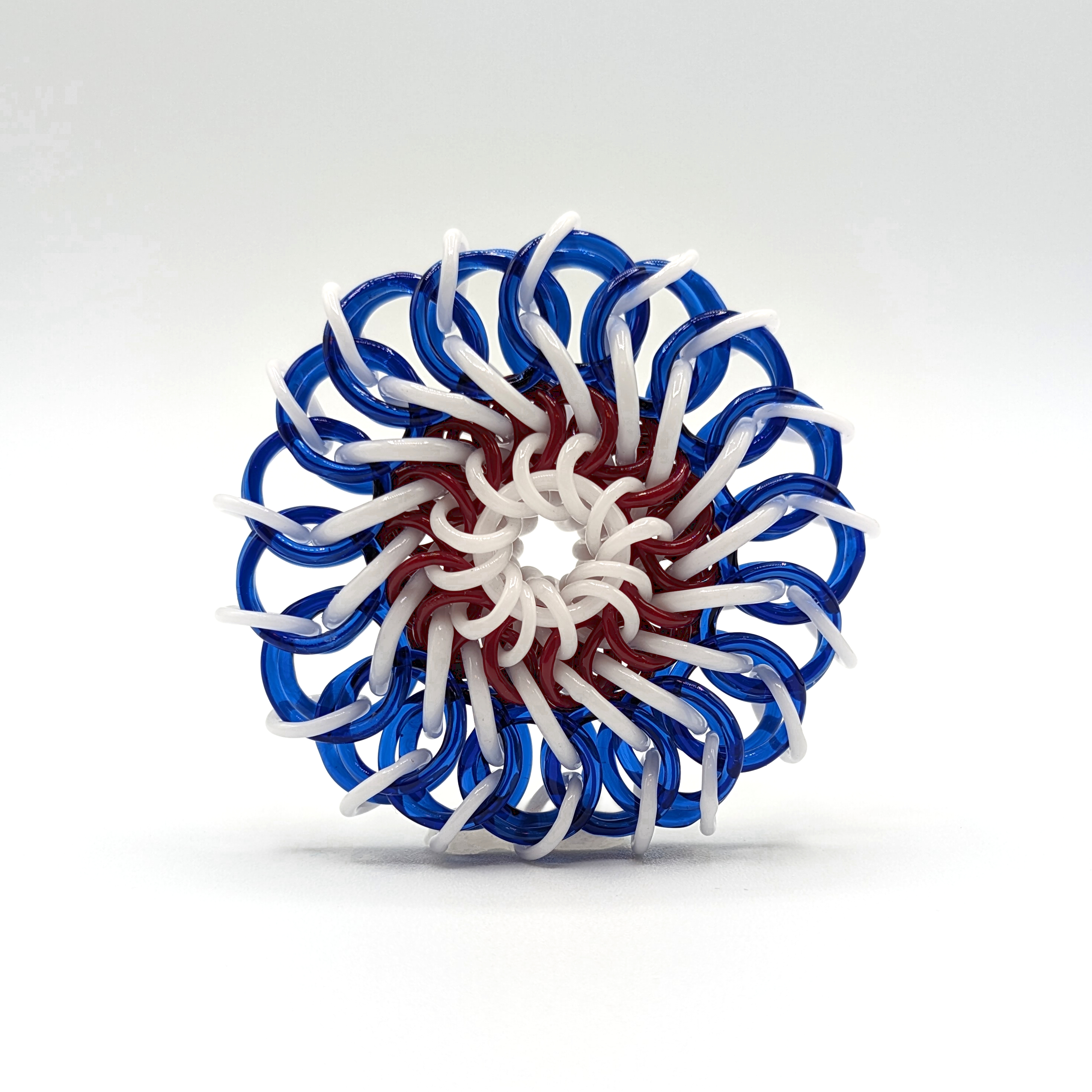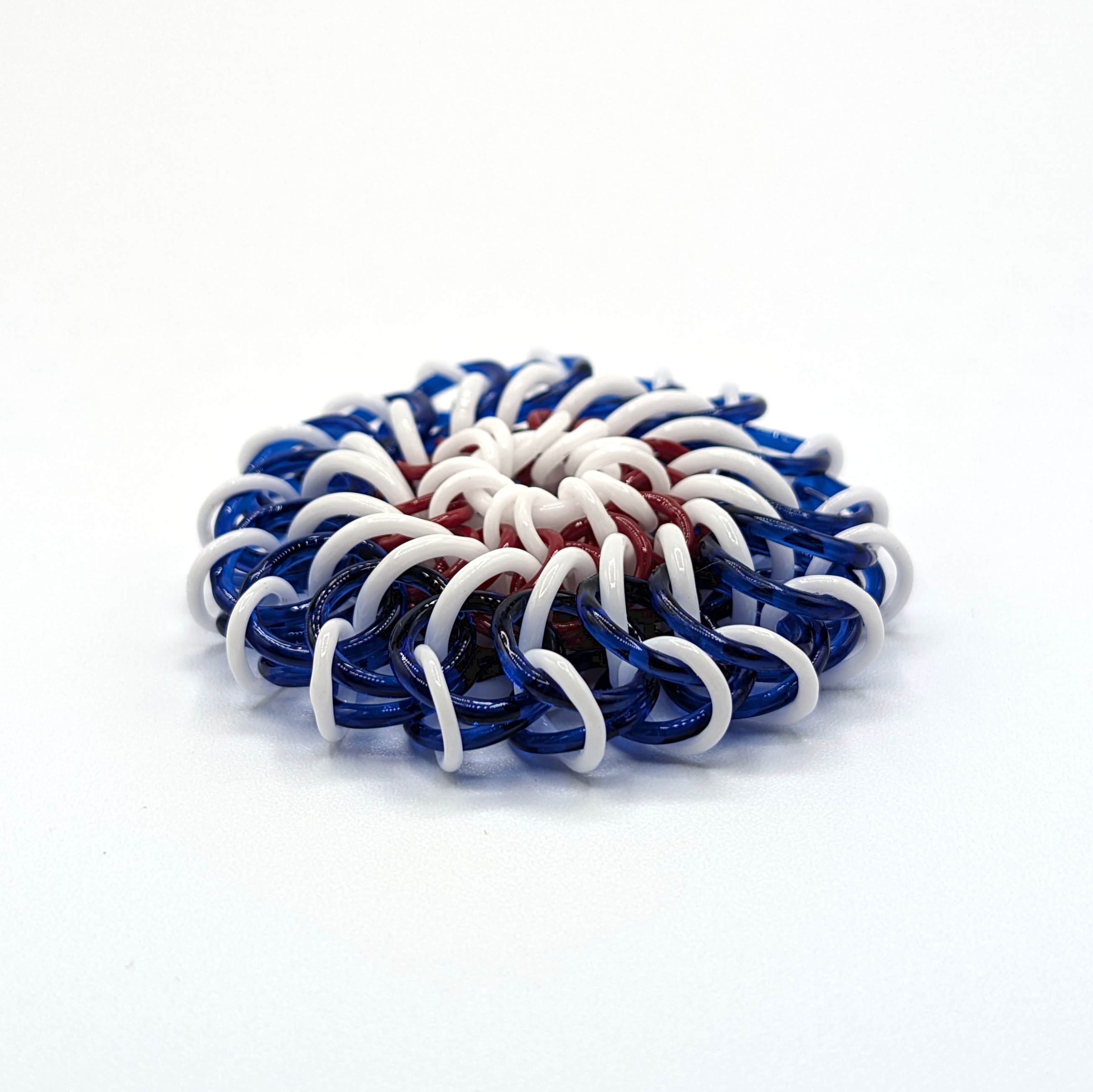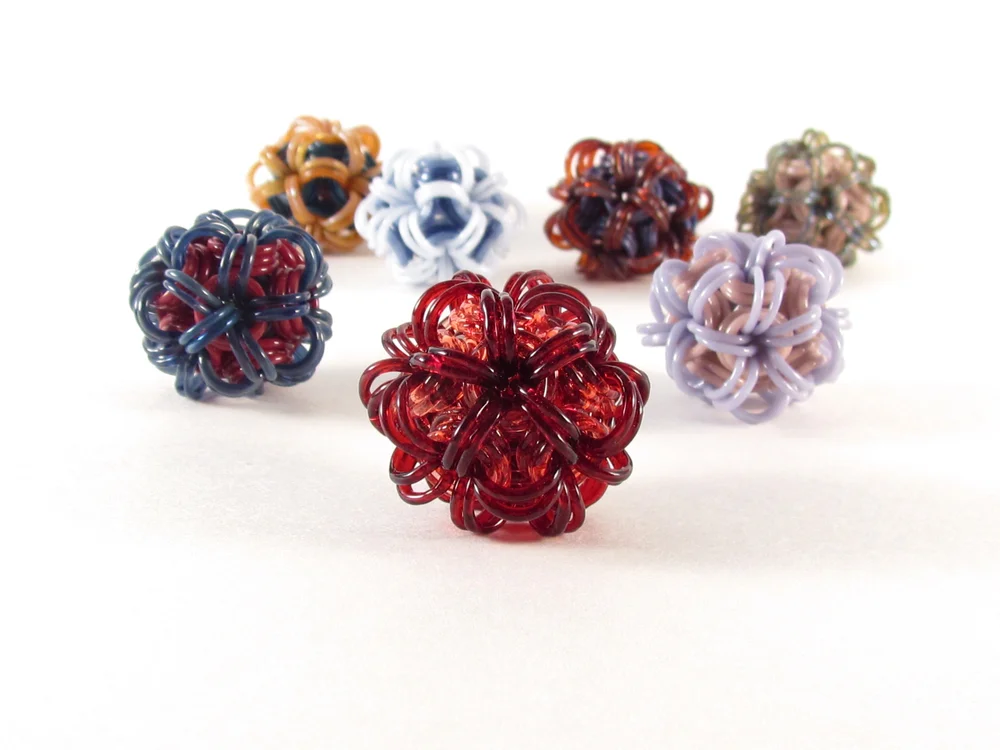Kim Edwards won the third prize in the 2024 Your Bead for Venice competition with her glass chainmail piece inspired by the traditional Venetian chevron beads (or rosetta,
as the Venetians call them). The rosetta bead is also the logo of the Comitato per la Salvaguardia dell’Arte delle Perle di Vetro, the organization that partners with the International Society of Glass Beadmakers for Your Bead for Venice.

This bead is an adaptation of a rosetta or chevron bead using glass chainmail. The five alternating layers of color, in opaque white, opaque red, and transparent cobalt, are intended to echo the star pattern of the rosetta beads.
The bead measures 6 cm x 1.5 cm and is made of borosilicate glass. It was made using a flameworking technique, in which thin glass canes are pulled in the flame
and then shaped individually by hand into rings. The bead contains 134 rings in six different sizes. The bead
’s shape is formed by the pressure of the rings pushing against each other. Because of this, for the bead to maintain its structure, every ring must be a specific size and diameter.
I have admired rosetta beads since I began working with glass. Each ring is joined carefully with others while in the flame to ensure that each ring remains loose and moves freely within the larger bead.
In my first flameworking bead class, the instructor brought books of glass beads to show the students the amazing things that could be accomplished with the medium. The beauty of the rosetta beads caught my eye, and I asked my instructor about them. She described the process of shaping, drawing, cutting and polishing that it took to make the beads; it was like someone describing an impossible feat. In the years since, I have remained captivated by rosetta beads, often describing how they are made to illustrate to people the historical depth of creativity and technique found in glass in general and beadmaking in particular.
What advice would you give to a fellow artist who wanted to enter a competition, glass or otherwise? Go for it!

As a warning, I’m about to sound like a motivational poster, but you’ll never get accepted for anything if you don’t try. It can absolutely be a bit scary the first time or two (or six), but most of the competitions I’ve participated in have been incredibly supportive of those of us on the artist side of things—after all, the organizers are in this because they love the art too. My philosophy has always been to toss my hat in the ring, neither expecting nor hoping to get in and just planning to have fun. If you get accepted, great! But if not, you’ll still have made something amazing and, depending on the competition, maybe gotten a chance to spend time with some fellow artists.
As an added reason, if you’re anything like me, your list of things you want to make will always be much longer than you’ll ever have time for. Competitions are a great way to help you pick what you might want to work on next.

What was your experience of Glass Week in Venice and the Your Bead for Venice reception? Glass Week was extraordinary. I’d never been to Venice before, and it was incredible to be there during a time when so much other glass art was being displayed and so many other artists were being celebrated.
The Your Bead for Venice crew truly made the trip phenomenal. Everyone was so welcoming and the tours they arranged of Murano and Venice were amazing. (I took so many photos of street signs! But they were glass-related street signs, so I decided that was probably okay).
What do you do when you are not working with glass?

I’m a librarian in my day job (so, of course, I also have all the requisite librarian-themed hobbies like reading…and reading).
Why glass?
Glass is an amazing medium. It is as simple (and as complicated) as that. Before I took my first glass class, I was
a perpetual medium hopper—nothing held my attention for more than a few months. But there is something about molten glass that is endlessly fascinating. One of those is that if you get distracted while flameworking, the glass will absolutely remind you. But it’s also that I always feel as though there’smore to learn and more ways in which I can grow.
Who has influenced you most in your glass journey
and how?
Everyone in our community! One of the things I love most about the glass community is how much people want to help others develop and grow. From my very first instructor (the wonderful Teresa Brittain) to the group I got to spend time with in Venice, whenever I’m able to hang out with other glass artists, I learn and am inspired.
